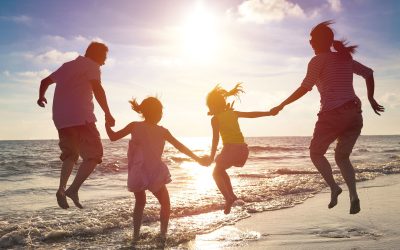“Wonderful things can happen when parents, educators, and students work cohesively, reaching out to the community and even further for relevant and authentic learning opportunities.”
~ Being Smart about Gifted Learning, Matthews and Foster, 2021. p. 373
Throughout the year, families continue to navigate various educational options. It’s vital that parents become aware of learning experiences that are relevant and available for their child or teenager—offerings near and possibly far, and that are appropriately challenging across the ability spectrum. However, it’s also important to pay attention to the input and responsibilities of all stakeholders. This allows for informed decision-making.
Here’s some essential information about the roles of those involved in creating successful home-school-community partnerships.
STUDENTS:
When children are given opportunities to explore possibilities for their education, they can help make it more interesting and suitable. Kids engaged in and responsible for co-creating their learning are more motivated and empowered to succeed. They can be encouraged to ask questions, to think creatively and critically, to put forth effort, and to advocate respectfully to have their learning needs met.
PARENTS:
Parents’ roles and responsibilities vary across situations, times, and windows of opportunity. Supports involve (but are not limited to) day-to-day nurturing, giving guidance, and helping to find resources. Parents are well-positioned to pay careful attention to children’s cognitive development; their physical and social-emotional well-being; and the building of character traits such as resilience, empathy, integrity, kindness—values that are increasingly being recognized as being more important than scholastic strengths.
TEACHERS:
Educators who facilitate children’s learning have many responsibilities. These include being knowledgeable about and flexibly responsive to individual differences (for example, academic, developmental, cultural); empowering kids to engage in productive problem-finding and problem-solving, and guiding students intelligently through learning processes. However, no teacher can do this alone! They require the collaborative efforts of colleagues and, of course, students, parents, and administrators.
PRINCIPALS AND SCHOOL ADMINISTRATORS:
Those who “run” educational institutions have multi-faceted roles. These involve juggling many ongoing tasks—for example, dealing with management issues; implementing and maintaining health and safety measures; fortifying professional and community networks; and coordinating program offerings. Whether on an individual or systemic basis, such work demands skills in negotiation and leadership. Fortunately, administrators have excellent allies within their communities of students, parents, and teachers. (Anyone can be an ally!)
COLLABORATION
All the above requires considerable investment of time and effort—directed at individual students, in situations that are diverse and always in flux. However, a collective approach helps children realize their capabilities. Two basic tenets of this kind of collaborative dynamic are to facilitate children’s engagement in their own learning, and to forge cohesive relationships between schools and families. And, a third and very important tenet is to strengthen community involvement.
“Collaborations across individuals, families, schools, and communities generate the best educational responses to a rapidly changing world.”
~ Being Smart about Gifted Learning, Matthews and Foster, 2021. p. 375
COMMUNITY INVOLVEMENT:
Being part of a community or neighbourhood can be empowering. It can accelerate possibilities for learning, including experiential opportunities (such as extracurricular activities, mentorships, and volunteerism), resource access (think of libraries, museums, parks, and recreation facilities), and connections (in various areas that are not bounded by age, ethnicity, socio-economic factors, or other potential barriers). Learning benefits acquired by way of experiences, resources, and connections are pivotal.
Plus, there are additional important aspects of community to consider. For example, there’s comfort, belonging, and reassurance—just being able to be with others when times are tough. And, there’s the accessibility of professional services when needed, from medical practitioners, health providers, educational counselors, or others within the broader community. This can be vital for parents’ self-care, and for children’s optimal development.
LAST WORDS
Home-school-community partnerships overflow with possibilities for meaningful learning. When students, parents, teachers, school administrators, and other community members reach out to one another and work together, everyone becomes stronger!
Author’s Note: This article is updated from one written by Dr. Joanne Foster that was featured in issues of Best Version Media’s Neighbours Magazines, and distributed across Ontario, Canada.








